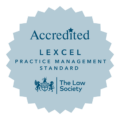Ways to occupy a property
There are multiple ways that you may occupy a property whether this occupancy is documented or not. You can occupy a property as a freeholder, being the registered proprietor of the whole property, or as a leaseholder. If you are a leaseholder, in other words a tenant, then this occupancy can be documented in different ways, and you may even be a tenant in a property if there is no documentation.
B P Collins’ property team explains the different ways you can document occupying a property as a tenant.
Leases and licences to occupy
The most common way that occupancy is documented is through a lease. A lease is a contract whereby a landlord grants the tenant exclusive use of the property for a period of time at an agreed rent, although there is no requirement for a lease to require the tenant to pay a rent. Exclusive use of the property means that the tenant can exercise the rights of the landowner whilst excluding the landlord and any third parties. This does not extend to any rights afforded to the landlord through the lease. The lease will usually grant the tenant specific rights and responsibilities regarding the property.
If you occupy a property under a lease, then it is important to ensure that this is registered or noted at HM Land Registry accordingly. For further information on this, please see our article Why is it important to register or note your lease?
A commercial lease may also be excluded from the security of tenure provisions afforded by Sections 24-28 of the Landlord and Tenant Act 1954. Please see our article Commercial Leases: Protected or Excluded? for further information.
Alternatively, you may occupy a property under a licence to occupy. A licence to occupy also grants a tenant permission to use the property for a period of time but does not grant exclusive use of the property. In this way, the landlord retains control over the property and the landlord may terminate the licence at any time they choose. Licences to occupy are generally short-term arrangements and may be granted security of tenure. In order to avoid this, landlords can grant two licences to occupy each for a term not exceeding six months.
Unlike a lease, a licence to occupy cannot be registered or noted at the Land Registry due to the short-term nature of the document. Whilst this may be the case, it is still important to have a licence to occupy documented to prove that you have a right to occupy the property.
Tenancies at will, periodic tenancies and implied tenancies
If you do not occupy a property under a lease or a licence to occupy, then you may occupy the property as a tenant at will, under a periodic tenancy or as a tenant implied from conduct.
You are a tenant at will if you occupy a property indefinitely with consent from the Landlord. The basis of the arrangement is that either party can end it at any time with immediate notice. This can be documented either formally in a tenancy at will or informally. Usually, tenancies at will are formed when a tenant takes occupation of the property whilst the landlord and tenant continue to negotiate the terms of a lease. As long as the intentions of the parties are maintained, for example that the tenant will take a lease of the property, then the tenant will remain as a tenant at will even if there is a long pause in negotiations.
A periodic tenancy occurs when an excluded lease ends and the tenant remains in occupation but there are no negotiations for a future document to be entered into. This will continue indefinitely from period to period, for example month to month, until proper notice determines the agreement. Another way to consider this form of occupation is as a rolling short-term lease where the term is month to month or year to year and rolls on until one party decides to terminate the agreement. Periodic tenancies are protected under the Landlord and Tenant Act 1954 meaning the tenant has security of tenure.
Finally, you may have a tenancy implied from the conduct of the landlord and tenant but this does not need a written agreement to be legally binding. Conduct may include that over many years the landlord has provided services such as utilities and the tenant has provided payments for those services, this may not necessarily be rent but may be in the form of paying a proportion of utility bills.
If you’d like any further information and advice on this issue or any other property matter, please contact B P Collins’ property team at enquiries@bpcollins.co.uk or call 01753 889995.



















